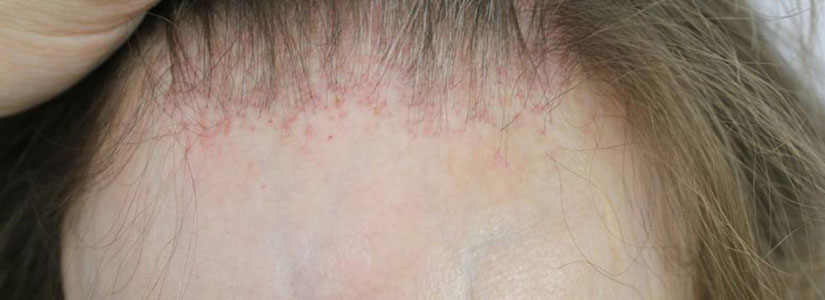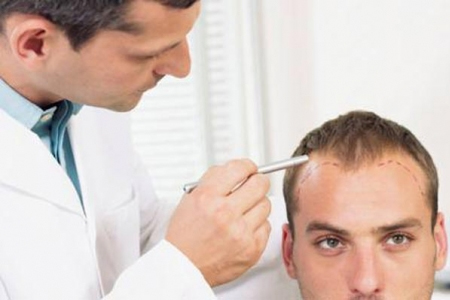Why go for a stem cell hair treatment?
February 14, 2017

Cicatricial alopecia is also known as Scarring Alopecia. It causes different types of hair loss conditions that lead to permanent hair loss. Scarring alopecia damages your hair follicles and replaces them with scar tissues. Once hair follicles are completely destroyed then hair regrowth process is impossible. Although, there are various kinds of scarring alopecia, inflammation is the only cause.
Hair follicles are located underneath the scalp skin. Your stem cells and sebaceous glands are located in the upper part of the skin. Once your stem cells and the sebaceous glands are damaged then there is no way to regenerate hair follicles, and it leads to permanent hair loss.
Following are the 03 Common Types of Scarring Alopecia:
FFA looks like a straight narrow band of hair loss at the front part of your head. Frontal Fibrosing Alopecia happens around your temples and hairline.
Mostly post-menopausal women are the victims of FFA. Some people also start losing their eyebrow hair due to FFA.
The symptoms of Fibrosing Alopecia are following:
The major factor which contributes in causing your Fibrosing Alopecia is hormonal fluctuations. As in menopause phase, your hormones can be imbalanced after the menstruation cycle.
There is no permanent treatment to cure your Fibrosing Alopecia but the trichologist may recommend you to use oral steroids and anti-inflammatory antibiotics.
CCCA is the most common form of scarring alopecia. It is also caused due to inflammation, it damages the hair follicle cells and leaves them unable to support any new hair growth.
Both men and women of any race can be the victim of CCCA. Pressing combs, braids and the hair extensions are the common causes of Central Centrifugal Cicatricial alopecia.
Central Centrifugal Cicatricial alopecia resembles with other types of hair loss such as genetic hair loss, diffuse hair loss or alopecia areata. So the diagnosis of Central Centrifugal Cicatricial alopecia is mostly done through the help of a scalp biopsy.
There are few symptoms of Central Centrifugal Cicatricial alopecia:
There is no permanent treatment to cure your Central Centrifugal Cicatricial alopecia but the trichologist may recommend you to use anti-inflammatory medications to reduce or to stop your lymphocytic cells from damaging your hair follicles.
LPP is different from the other forms of scarring alopecia. Because it’s an autoimmune inflammatory skin condition.
If you are suffering from Lichen Planopilaris then your immune system mistakenly attacks your hair follicle cells, replacing them with scar tissues.
The patchy hair loss can resemble with other types of alopecia, so a scalp biopsy can determine if its LPP or not.
Well, there is no long-lasting treatment to cure your Lichen Planopilaris but the trichologist may recommend you to use corticosteroid creams. It will help relieve your itching, swelling and treating skin bumps.
If you are seeing the above-mentioned indications, any of the 3 Common Types of Scarring Alopecia. Then instead of wasting your time in self-medication and self-diagnosis, it’s better if you seek a trichologist help in time.
Arrange an appointment with the trichologist at the hair transplant clinic. He will examine your hair loss and scalp condition, very carefully.
Then the trichologist will tell you that which type of the hair loss you are suffering from and its severity.
Trichologist will evaluate your hair loss treatment options and may recommend you to get a proper alopecia treatment in Dubai from Hair Transplant Dubai Clinic.
Dr. Cagatay Sezgin is a celebrity hair transplant surgeon with over 20 years of experience in hair transplantation and restoration. He is the First Turkish Board Surgeon to become a member of the International Society of Hair Restoration Surgery (ISHRS) and the Asian Association of Hair Transplant Surgeons (AAHRS). Moreover, he has the honor of becoming the first hair transplant surgeon in the world to perform hair, eyebrow, and beard transplantation all in one case and that too in a single session.

February 14, 2017

March 20, 2013

November 29, 2018